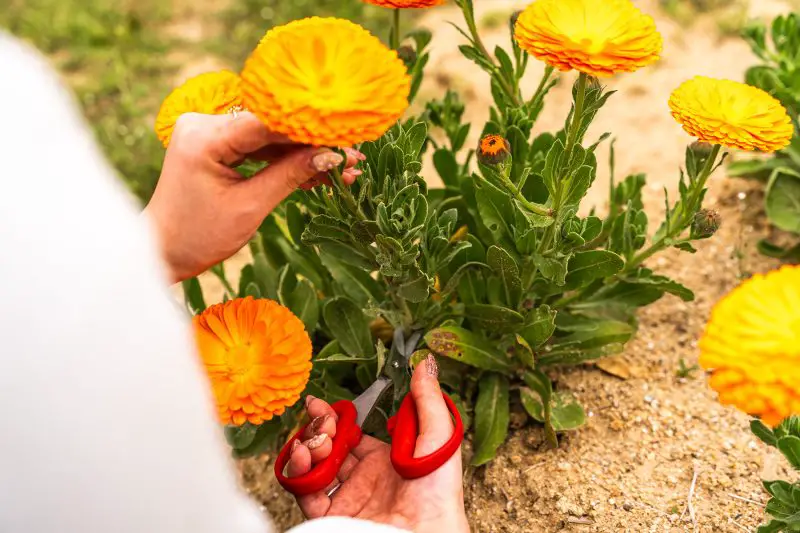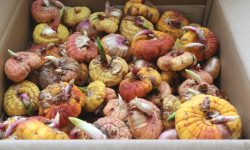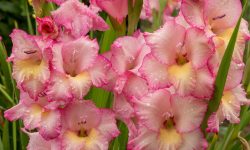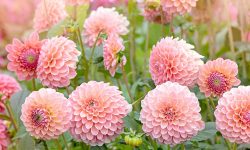Calendula, also known as pot marigold, is a versatile flower prized for its vibrant blooms, medicinal properties, and culinary uses. Understanding the proper techniques for harvesting and caring for calendula ensures that gardeners can enjoy high-quality flowers throughout the growing season. Timing, handling, and maintenance all play a crucial role in preserving the plant’s health and maximizing the potency and visual appeal of its petals.
In addition to harvesting, knowing how to store and use calendula effectively extends its benefits year-round. From teas and salves to culinary and cosmetic applications, well-maintained calendula delivers both beauty and functionality. By mastering seasonal care, pruning, and harvesting techniques, gardeners can ensure continuous blooms, healthy growth, and long-lasting flower quality for multiple uses.
Understanding Calendula Growth

Calendula, commonly known as marigold, is an annual flowering plant that flourishes in full sun and well-drained soil. Understanding its growth pattern is crucial for successful cultivation and harvesting. Germination usually occurs within seven to fourteen days under optimal conditions. The plant first develops a rosette of green foliage, which supports healthy stem formation. Strong roots are essential for nutrient absorption, overall plant vigor, and flower quality, directly influencing bloom size and color intensity.
As calendula matures, flower buds begin forming on sturdy stems, signaling the onset of the flowering phase. Environmental factors such as temperature, light exposure, and soil fertility play a significant role in determining bloom timing and quality. Consistent watering encourages steady growth and prevents stress that may lead to premature wilting or reduced flower potency. By monitoring plant development carefully, gardeners can identify the best time to harvest each bloom, ensuring vibrant petals and maximum medicinal or aesthetic value.
Effective pest management and disease prevention are also key to maintaining healthy growth. Common threats include aphids, slugs, and fungal infections, which can weaken plants and reduce flower production. Regular inspections, appropriate plant spacing, and organic control measures help safeguard plant health. By understanding calendula’s life cycle—from germination to full bloom—gardeners can make informed decisions about fertilization, pruning, and harvesting. This knowledge ensures continuous flowering, prolonged bloom duration, and long-term plant vitality throughout the growing season.
Choosing the Right Flowers
Selecting the best calendula flowers for harvest is essential to ensure maximum quality and potency. Optimal flowers are fully open, vibrant in color, and free from damage or disease. Avoid blooms that are wilting, overripe, or show signs of pests, as they provide lower medicinal and aesthetic value. Choosing healthy flowers ensures that harvested blooms maintain their benefits for teas, tinctures, or skincare applications.
When selecting flowers, pay attention to bright yellow or deep orange petals that appear firm and fresh. Inspect stems and leaves carefully, because flowers from stressed or unhealthy plants may not store well and can lose potency. Observing plants regularly throughout the growing season helps identify peak bloom times. Harvesting at these times guarantees vibrant flowers, enhancing both appearance and functionality.
Timing and technique also influence flower selection. Harvest in the early morning, after dew has evaporated, to minimize moisture on petals and reduce mold risk during drying. Use clean, sharp scissors to cut stems just above the first healthy leaves, preserving plant structure and encouraging future blooms. Gentle handling of each flower maximizes quality, extends flowering potential, and ensures a reliable, high-quality harvest for continuous use throughout the season.
Best Time to Harvest
Timing is critical for harvesting calendula to achieve vibrant, high-quality flowers. Early morning, after dew has evaporated but before the day becomes hot, is ideal. Flowers harvested at this time retain maximum color, balanced moisture, and medicinal potency, which is important for teas, tinctures, and skincare applications. Morning harvesting also reduces the risk of wilting, ensuring that blooms remain fresh for drying or immediate use.
Select flowers that are fully open but not overripe, as older blooms may have lost petals, vibrancy, and essential compounds. Monitoring plants regularly throughout the growing season allows gardeners to identify peak bloom periods. Seasonal variations affect bloom timing; spring and early summer often provide the most vigorous and colorful flowers. By observing these cycles, gardeners can consistently harvest high-quality blooms and maintain plant health for continuous flowering throughout the season.
Environmental factors also influence the best harvest time. Adequate sunlight, moderate temperatures, and proper soil moisture contribute to optimal flower development. Avoid harvesting after heavy rain or during extreme heat, which can damage petals and increase mold risk. Understanding and responding to these conditions ensures that each calendula harvest delivers bright, healthy, and potent flowers, maximizing both aesthetic appeal and medicinal value. Careful timing and observation guarantee blooms that are both visually stunning and highly effective.
Harvesting Techniques
Cutting Methods
Using proper cutting techniques is vital to maintain both the quality of calendula flowers and the overall health of the plant. Sharp, clean scissors or pruning shears prevent crushing petals and stems, which could damage blooms and reduce their medicinal potency. Cut just above the first set of healthy leaves to promote new growth and ensure continuous flowering. Handling flowers gently during the process preserves vibrant color, aroma, and structural integrity, all essential for teas, tinctures, or skincare products.
Avoid pulling flowers by hand, as this can harm roots and weaken plant structure, reducing future flower production. Harvest in stages, taking only fully mature blooms, which allows younger buds to develop properly. Consistently applying these techniques maximizes flower yield without stressing the plant. Proper cutting supports sustainable calendula cultivation, encouraging resilience and abundant blooms. By carefully choosing when and how to cut, gardeners maintain long-term plant health and enjoy continuous vibrant flowers throughout the growing season.
Handling and Hygiene
Maintaining hygiene during harvest is crucial to protect both flowers and plants from pests and diseases. Clean tools thoroughly between cuts to prevent the spread of pathogens, which can compromise flower quality and plant health. Wearing gloves or washing hands before handling flowers reduces the risk of transferring pests, bacteria, or fungal spores to the blooms, preserving their integrity and shelf life.
Store harvested blooms in a cool, shaded, and ventilated area to prevent wilting or moisture accumulation, which may lead to mold growth. Gentle handling ensures that petals remain intact, preserving color, aroma, and potency. Combining careful handling with hygienic practices produces high-quality calendula blooms suitable for various uses while supporting long-term plant productivity. Proper attention to hygiene and handling enhances both immediate harvest quality and ongoing plant health.
Caring for Plants After Harvest
Watering and Soil Care
After harvesting calendula, proper watering is essential to help plants recover and continue blooming. Consistent moisture encourages new growth, strengthens stems, and supports flower production. Avoid overwatering, which can lead to root rot and reduced plant vitality. Regularly check soil to ensure it remains evenly moist but not waterlogged. Applying mulch around the plant base retains moisture and helps regulate soil temperature, protecting roots from stress.
Fertilizing with balanced nutrients replenishes elements lost during flower production. Organic fertilizers or compost improve soil structure, enrich nutrients, and enhance overall plant health. Monitoring soil conditions and adjusting watering practices enable calendula to maintain energy for successive blooms, ensuring sustained flower quality throughout the season. Adequate care after harvesting supports both immediate recovery and long-term productivity.
Pruning and Maintenance
Pruning spent blooms and damaged leaves is essential for calendula plants to redirect energy toward new growth. Deadheading encourages more vigorous flowering, prolongs the harvest period, and enhances flower quality. Removing yellowing or diseased foliage prevents the spread of pathogens, improves airflow, and lowers the risk of fungal infections. Proper pruning also maintains plant shape, supports overall health, and encourages continuous blooming throughout the season.
Regular post-harvest inspection for pests is crucial. Aphids, slugs, and other insects can weaken plants and limit future blooms. Using organic pest control methods, such as neem oil or insecticidal soap, protects plant health while ensuring that flowers remain safe for medicinal or culinary use. Combining careful pruning with vigilant maintenance ensures calendula remains strong, vibrant, and productive. Consistent attention to these practices maximizes both the quantity and quality of flowers, making successive harvests more abundant and supporting long-term plant vitality.
Thinning and Transplanting
Thinning Young Calendula Seedlings
Thinning is an essential step to ensure healthy growth of calendula seedlings. When seedlings develop their first true leaves, thin them by removing weaker or overcrowded plants. This reduces competition for sunlight, water, and nutrients, allowing the strongest seedlings to thrive. Thinning also improves airflow between plants, lowering the risk of fungal infections and other diseases that can spread in dense growth.
To thin properly, gently snip unwanted seedlings at soil level rather than pulling them, which can disturb nearby roots. Space remaining seedlings according to their mature size requirements to optimize growth. Consistent monitoring and timely thinning promote strong, robust plants, maximizing flowering potential. By carefully managing density early, gardeners set the stage for a productive, healthy garden with vibrant calendula blooms throughout the season.
Transplanting Calendula Seedlings
Transplanting is necessary when seedlings outgrow their initial containers or garden spacing. Choose a cool, cloudy day or late afternoon to reduce transplant shock. Water seedlings thoroughly before moving to keep roots hydrated. Prepare the new location with well-draining soil enriched with organic matter to support healthy growth.
Carefully lift seedlings by the root ball to avoid damaging fragile roots. Plant at the same depth as they grew previously, gently firming soil around them. Mulching around transplanted seedlings conserves moisture and protects against temperature fluctuations. Transplanting strengthens plant structure, encourages strong root development, and ensures calendula plants have sufficient space to flourish, resulting in abundant flowers for harvesting.
Caring for Calendula Throughout the Season
Spring Care
In spring, calendula plants require consistent watering and full sunlight to promote strong growth and abundant blooms. Fertilizing with balanced organic nutrients encourages vigorous foliage and flower development. Regularly checking soil moisture prevents over or under-watering, ensuring plants establish a solid root system. Proper spacing between plants improves airflow, reducing disease risks and supporting overall plant health.
Pruning damaged leaves and dead stems during spring directs energy to new growth and encourages more prolific flowering. Mulching around the base helps conserve soil moisture, regulate temperature, and prevent weed competition. Observing plant health closely and adjusting care routines establishes a solid foundation for a productive growing season, ensuring a plentiful and vibrant harvest.
Summer Care
During summer, calendula plants often face heat stress and dehydration due to higher temperatures and increased sunlight. Providing partial shade during the hottest hours of the day protects leaves from scorching and reduces water loss. Increase watering frequency while ensuring the soil remains well-drained to prevent root rot and other moisture-related issues. Consistent monitoring of soil moisture, plant appearance, and leaf turgidity helps maintain steady growth and healthy flowering. Adjust care routines according to weather patterns to ensure plants stay vibrant and productive throughout the season.
Maintaining flower quality during summer requires regular deadheading of spent blooms to encourage continuous flowering and extend the harvest period. Inspect plants frequently for common pests such as aphids, slugs, or caterpillars, and apply organic pest control treatments when necessary to prevent damage. Fertilizing lightly with balanced nutrients supports strong stems and abundant blooms. Summer care emphasizes preserving plant vitality under challenging conditions, ensuring a steady supply of healthy calendula flowers for culinary, medicinal, and ornamental uses. Proper attention during this period maximizes flowering potential and overall plant resilience.
Fall Care
In fall, gradually reduce watering as temperatures cool, allowing calendula plants to adjust to seasonal changes. Remove spent flowers regularly to prevent seed formation that can drain plant energy. Prune damaged or diseased foliage to reduce the risk of fungal infections and prepare plants for the dormant period. Applying a thick layer of mulch around the roots protects them from cold temperatures, conserves soil moisture, and stabilizes soil conditions during fluctuating fall weather. Mulching also suppresses weed growth, which can compete with calendula for nutrients and water.
Fall care also requires careful monitoring for late-season pests and diseases. Aphids, slugs, and fungal infections can still appear as temperatures drop. Maintaining proper plant spacing and good airflow between plants reduces humidity and limits the spread of pathogens. Fall is an ideal time to clean garden tools and remove fallen debris, preventing overwintering of pests. By implementing these practices, gardeners strengthen plants for winter dormancy, ensuring healthy regrowth in spring. Adequate fall care extends flowering potential, supports continuous productivity, and maximizes future harvests of vibrant, high-quality calendula flowers.
Winter Care
During winter, calendula plants require protection from frost and extreme cold to survive the dormant season. Use row covers, cloches, or frost blankets to shield outdoor plants, and consider moving potted plants indoors to a bright, cool area. Water sparingly, ensuring the soil remains slightly moist but never waterlogged, as excessive moisture can cause root rot. Minimal intervention during dormancy allows plants to conserve energy, maintaining healthy root systems and preparing for vigorous growth in spring. Monitoring environmental conditions helps prevent stress caused by temperature fluctuations.
Regular inspection of calendula during winter is essential to detect any signs of damage, disease, or pest activity. Remove affected leaves promptly to prevent the spread of fungal infections or infestations. Maintaining proper air circulation around plants reduces the risk of mold and mildew. Winter care also includes checking mulch layers and adjusting them if necessary to maintain insulation. Proper winter management ensures that calendula emerges strong in spring, ready to produce vibrant, abundant blooms. Planning and implementing these protective strategies lays a solid foundation for a successful and productive growing season.
Drying and Storing Calendula
Air Drying
Air drying is a traditional and effective method for preserving calendula flowers. Harvest blooms at their peak, ideally in the morning after dew has evaporated, to prevent mold. Tie small bunches with string and hang them upside down in a cool, dark, and well-ventilated area. Proper airflow ensures even drying, preserving color, aroma, and medicinal properties.
Avoid direct sunlight, which can fade petals and degrade essential compounds. Check the flowers daily for any signs of moisture or mold. The drying process usually takes one to two weeks, depending on humidity levels. Fully dried blooms should be crisp to the touch, signaling readiness for storage. Air drying maintains natural flower integrity, allowing calendula to be used in teas, tinctures, and skincare preparations while retaining maximum potency.
Storing Dried Flowers
Proper storage of dried calendula is essential to maintain flower quality, potency, and longevity. Once fully dried, place flowers in airtight containers, such as glass jars with tight-fitting lids or vacuum-sealed bags, to prevent moisture absorption and protect against pests. Label each container with the harvest date to monitor shelf life, with optimal potency usually retained for up to one year.
Store containers in a cool, dark location away from direct sunlight, heat, or humidity, as these conditions can degrade essential compounds, color, and aroma. Avoid frequently opening the containers since repeated exposure to air and moisture may reduce flower quality. For extra protection, silica gel packets or oxygen absorbers can be placed inside containers to maintain low humidity.
Proper storage ensures calendula retains vibrant color, fragrance, and therapeutic properties, making it ready for culinary, medicinal, or cosmetic applications. Gentle handling during storage minimizes petal damage and preserves flower integrity. By carefully controlling storage conditions, gardeners can enjoy potent and visually appealing calendula blooms long after harvest, ensuring a reliable supply throughout the year for continuous use and enjoyment.
Common Mistakes to Avoid
Overwatering and Soil Issues
One frequent mistake when growing calendula is overwatering. Excess water can cause root rot, mold, and weak stems, reducing overall plant health. Soil that retains too much moisture limits oxygen availability to roots, hindering nutrient uptake. To prevent this, ensure the soil is well-draining and water only when the top inch feels dry. Mulching can help maintain adequate moisture without oversaturation, protecting roots from stress.
Monitoring soil moisture and adjusting watering based on weather is crucial. If signs of overwatering appear, such as yellowing leaves or soggy soil, reduce watering and improve drainage. Raised beds or containers with proper drainage further enhance soil conditions. Correct soil and watering management promotes strong root systems and healthier blooms, preventing common growth issues and supporting long-term plant vitality.
Pest and Disease Troubleshooting
Pests and diseases can greatly impact calendula growth and flower quality. Aphids, slugs, and powdery mildew are common problems. Regularly inspect plants for early signs of infestation, such as damaged leaves, spots, or deformed flowers. Early detection allows timely intervention, minimizing damage and preserving bloom quality.
Use organic treatments like neem oil, insecticidal soap, or diatomaceous earth to manage pests safely. Remove affected leaves and maintain proper spacing between plants to reduce disease spread. Implement crop rotation and clean tools after each use to further support plant health. Vigilant observation and proactive measures ensure calendula remains productive, vibrant, and high-quality throughout the season.
Staking and Supporting Tall Stems
Calendula plants, particularly taller varieties, can develop long, delicate stems that are prone to bending or breaking under the weight of flowers or during strong winds. Proper staking and support are essential to maintain plant structure, prevent damage, and ensure optimal flowering. Supporting stems allows plants to focus energy on flower production rather than repair, resulting in healthier, more robust blooms. Staking also improves airflow between stems, which helps reduce disease and fungal issues in dense gardens.
There are several methods to support tall calendula stems. Wooden stakes or bamboo sticks can be placed near individual plants or rows, and stems can be gently tied using soft plant ties, twine, or even strips of cloth. Avoid tying too tightly to prevent constricting growth or damaging the stem. For larger clusters, a simple trellis or cage can provide additional support, keeping multiple stems upright and organized. Regularly check ties and supports as plants grow, adjusting them to accommodate increased height or weight.
In addition to structural support, staking contributes to better garden aesthetics and ease of maintenance. Upright stems make deadheading and harvesting more accessible, reducing the risk of crushing or disturbing surrounding flowers. By incorporating proper staking techniques early in the growing season, gardeners can prevent costly damage from breakage or pest infestations that often occur in tangled, unsupported foliage. Overall, staking ensures that tall calendula varieties remain vibrant, healthy, and productive throughout the season, delivering abundant flowers for culinary, medicinal, and ornamental uses.
Companion Planting
Calendula thrives when planted alongside certain herbs and vegetables. This companion planting strategy not only enhances garden aesthetics but also provides natural pest control. Planting calendula near tomatoes, carrots, or basil helps repel harmful insects while attracting beneficial pollinators. These interactions contribute to a more balanced ecosystem and healthier neighboring plants.
Beyond pest management, calendula improves soil fertility by attracting organisms that enrich soil structure. Its roots help aerate the soil and support nutrient cycling, which benefits nearby plants. Gardeners who use calendula strategically can enhance overall garden productivity, promoting higher yields and better plant health.
Implementing companion planting requires careful planning. Consider plant spacing, sunlight needs, and water requirements to ensure all species thrive together. Observing how calendula interacts with other plants allows gardeners to optimize growth and maximize benefits. The dual role of calendula as both a decorative and functional plant makes it an excellent addition to any mixed garden.
Harvest Timing
Harvesting calendula at the optimal time is essential for maintaining flower quality, color, and medicinal potency. The best time to pick blooms is in the morning after the dew has evaporated, when flowers are fully open and vibrant. Early morning harvesting ensures maximum essential oil content, which contributes to aroma, therapeutic properties, and overall flower integrity. Avoid picking overripe or faded flowers, as they may have reduced color, flavor, and efficacy for culinary, medicinal, or cosmetic uses. Observing the plant regularly allows gardeners to select the prime flowers for harvest consistently throughout the season.
Proper harvest timing also encourages continuous blooming by redirecting plant energy toward producing new flowers. Deadheading spent blooms prevents seed formation, which can drain the plant’s resources, and stimulates the development of fresh buds. By harvesting at peak bloom, gardeners can extend the flowering period and maintain overall plant health. Consistent monitoring and timely harvesting play a critical role in ensuring a steady supply of high-quality calendula flowers for various applications.
In addition, understanding seasonal growth patterns aids in planning multiple harvests. Calendula generally blooms from late spring to early autumn, but careful observation of environmental factors like sunlight, temperature, and rainfall helps determine optimal harvest intervals. Regular harvesting aligned with peak bloom times maximizes yield, preserves vibrant color and essential properties, and supports a productive, sustainable garden. By implementing a structured harvest strategy, gardeners can enjoy fresh and dried calendula flowers for culinary, medicinal, and cosmetic uses throughout the year.
Pruning and Maintenance
Pruning Spent Blooms
Regular pruning of spent calendula blooms is essential to maintain plant vitality and encourage continuous flowering. Removing faded or wilted flowers prevents the plant from putting energy into seed production, redirecting nutrients to new growth and additional blooms. Consistent deadheading promotes a longer flowering season and ensures that harvested flowers remain vibrant and high-quality.
Prune carefully using clean scissors or garden shears to avoid damaging healthy stems. Focus on cutting just above a leaf node or lateral branch to stimulate new bud development. Observing plants daily or every few days helps identify flowers ready for removal. Effective pruning also improves air circulation, reducing the risk of fungal infections and pest infestations. By maintaining a regular pruning routine, gardeners can optimize both flower quality and overall plant health throughout the growing season.
General Plant Maintenance
Beyond pruning, general maintenance is key to keeping calendula strong and productive. This includes monitoring for pests such as aphids, slugs, and caterpillars, as well as checking for signs of disease like powdery mildew or leaf spots. Implementing organic pest control or removing affected foliage promptly helps protect the plant while maintaining bloom quality.
Other maintenance practices include watering consistently, ensuring soil is well-drained, and applying balanced organic fertilizers to support ongoing growth. Mulching around the base conserves moisture, regulates soil temperature, and suppresses weeds. Regular attention to plant care fosters vigorous stems, healthy leaves, and abundant blooms. By combining pruning with thorough maintenance routines, gardeners can enjoy vibrant calendula flowers for both fresh use and drying purposes throughout the season.
Storing Dried Flowers
Proper storage of dried calendula flowers is crucial to maintain their color, aroma, and therapeutic properties. After drying, ensure the flowers are completely free of moisture to prevent mold or spoilage. Choose airtight containers such as glass jars with tight-fitting lids or vacuum-sealed bags. These containers protect flowers from humidity, pests, and environmental factors that could degrade quality. Labeling each container with the harvest date helps track shelf life, with most dried calendula retaining optimal potency for up to one year.
Store dried flowers in a cool, dark place away from direct sunlight and heat sources. Light exposure can fade colors and reduce the potency of essential oils in the petals, while heat can accelerate deterioration. Minimizing container openings reduces the risk of moisture absorption and preserves the flowers’ integrity. For longer-term storage, consider adding a small food-safe desiccant packet to absorb residual humidity. Maintaining consistent storage conditions ensures that calendula flowers remain vibrant and ready for culinary, medicinal, or cosmetic applications.
Properly stored dried flowers can be used throughout the year in teas, tinctures, salves, or infused oils. Their therapeutic benefits, including anti-inflammatory and antioxidant properties, are preserved when stored correctly. Dried petals also retain visual appeal for decorative purposes in potpourri, crafts, or floral arrangements. By implementing careful drying and storage methods, gardeners can maximize the value of their calendula harvest, ensuring flowers are available and effective long after the growing season ends. Proper storage extends the usability of blooms and enhances the overall gardening experience.
Flower Uses
Calendula flowers are highly versatile, offering multiple applications in culinary, medicinal, and cosmetic areas. Fresh or dried blooms can be used to make teas, tinctures, salves, and infusions, delivering antioxidant and anti-inflammatory benefits. Culinary uses include adding petals to salads, soups, and baked goods, providing vibrant color and subtle flavor. Incorporating calendula into daily recipes enhances not only taste but also visual appeal, making meals more appetizing and nutritious.
Medicinally, calendula supports skin healing, soothes minor burns, and reduces inflammation. It can be infused into oils for topical applications, combined with other herbs in salves, or brewed into soothing teas. Its natural antimicrobial properties make it a gentle remedy for cuts, rashes, and other skin irritations. By utilizing calendula for home remedies, gardeners can enjoy natural wellness benefits while making full use of their harvested flowers.
In cosmetic applications, calendula is popular in skincare products due to its soothing, hydrating, and anti-inflammatory effects. Petals can be infused into creams, lotions, and bath products, helping to calm sensitive skin and promote healing. Understanding the versatility of calendula encourages gardeners to maximize their harvest, ensuring flowers are not wasted. Proper drying, storage, and preparation methods preserve potency, color, and aroma, allowing blooms to be used effectively throughout the year for both aesthetic and therapeutic purposes.
FAQ About How to Harvest Calendula
What is the best time of day to harvest calendula flowers?
The ideal time to harvest calendula is in the morning after the dew has dried. Flowers are fully open, vibrant, and rich in essential oils at this time. Morning harvesting ensures maximum potency, color, and aroma. Avoid harvesting during the heat of the day, which can stress the plant and reduce flower quality.
How do I know which calendula flowers are ready to harvest?
Pick flowers that are fully open and bright in color. Avoid overripe or faded blooms, as they have reduced therapeutic, culinary, and cosmetic value. Regular inspection helps select the best flowers. Choosing the right blooms ensures continuous flowering and maintains overall plant health while maximizing harvest quality.
Can I harvest calendula for drying, and how should I do it?
Yes, calendula flowers can be harvested for drying. Cut blooms at peak color and aroma, then air-dry in a cool, dark, and ventilated area. Proper drying preserves essential oils, color, and medicinal properties. Store dried flowers in airtight containers to maintain potency for later culinary, cosmetic, or medicinal use.
How often should I harvest calendula to encourage more blooms?
Frequent harvesting or deadheading encourages continuous flowering. Remove spent blooms before they form seeds, which conserves the plant’s energy for new growth. Regular harvesting supports long-term plant health, prolongs the flowering period, and ensures a steady supply of high-quality flowers for culinary, medicinal, or ornamental purposes.
Are there any precautions to take when harvesting calendula?
Handle flowers gently to avoid bruising or damaging petals. Use clean, sharp scissors or garden shears to minimize stress on the plant. Avoid harvesting in wet conditions, as moisture can promote mold or decay. Observing proper timing and technique ensures high-quality flowers and supports ongoing plant productivity.
Conclusion
Proper harvesting techniques are essential to maintain calendula flower quality, color, and potency. By observing optimal timing, handling flowers carefully, and removing spent blooms, gardeners ensure continuous flowering and long-term plant health. Seasonal care and consistent monitoring further support vibrant blooms, making calendula a valuable addition to any garden for culinary, medicinal, and cosmetic uses. Thoughtful management throughout the growing season maximizes both yield and therapeutic benefits, allowing gardeners to enjoy fresh and dried flowers year-round.






